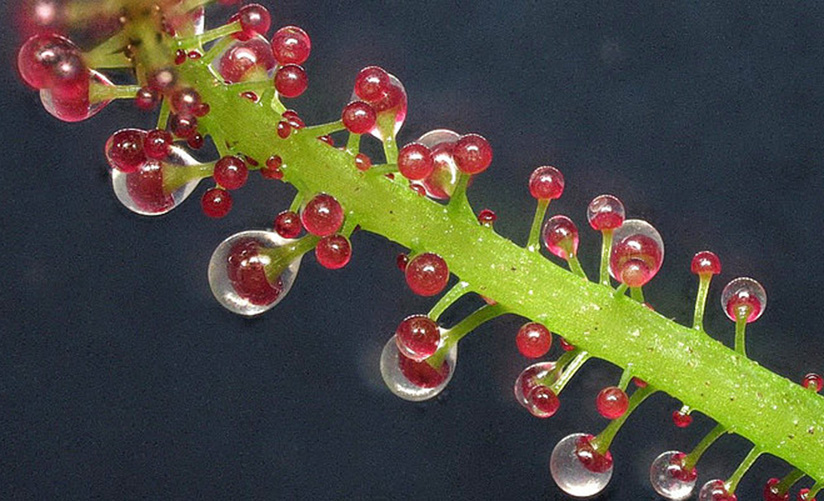Rare Tropical Plant Develops Taste For Meat Under Certain Conditions

Research teams based out of Hannover and Würzburg, Germany have uncovered the cause behind a rare tropical plant’s curious transformation into a carnivore. According to Phsy.Org, Triphyophyllum pelatum is a plant native to West Africa that’s attracted interest for its medical and pharmaceutical potential. Laboratory tests have shown the plant as useful against pancreatic cancer, leukemia cells, pathogens that cause malaria, and other diseases.
Triphyophyllum pelatum’s health-supporting properties combined with its distinct ability to become carnivorous makes it a one of a kind plant species. It’s typically known to feast on small insects, trapping them using adhesive drops of secretion. The six-legged prisoners are subsequently digested with synthesized lytic enzymes.
Considerably flexible, the plant has three stages of development; in the juvenile phase small leaves form, which leads to sticky “trap leaves” forming. After hitting their trap quota, the leaves fall off and are replaced with fresh ones. When in the liana stage, the leaves grow tiny hooks on the tips, which helps it climb up nearby trees. Overall, it’s a versatile plant that can adapt to its conditions.

The plant’s difficult cultivation process is one reason behind scientists only recently uncovering the trigger to triphyophyllum peltatum’s transformation. Thanks to scientists at Leibniz Universität Hannover (LUH) and Julius-Maximilians-Universität Würzburg (JMU), the mystery has been unraveled.
Würzburg Botanical Garden achieved the first successful cultivation of the plant, followed by Hannover, where in vitro conditions were used to propagate large quantities. The research results were published in the current issue of the journal New Phytologist.
“We exposed the plant to different stress factors, including deficiencies of various nutrients, and studied how it responded to each. Only in one case were we able to observe the formation of traps: in the case of a lack of phosphorus,” says Traud Winkelmann, giving an overview of the study.
Triphyophyllum peltatum survives in its dry-soiled West African habitat by using its traps, digesting nutrients from captured insects. “These new findings are a breakthrough because they allow future molecular analyses that will help understand the origins of carnivory,” the scientists say.






















